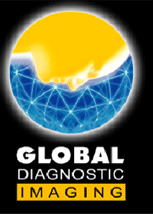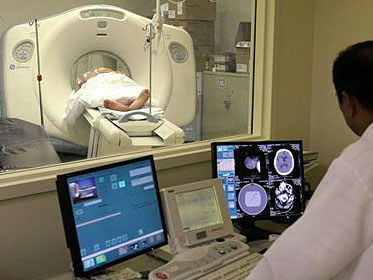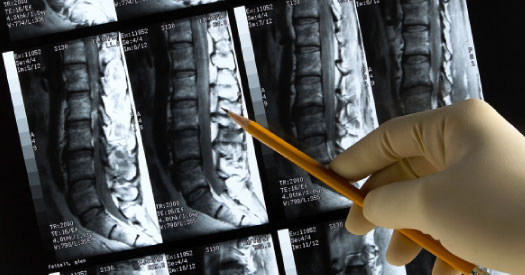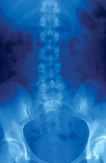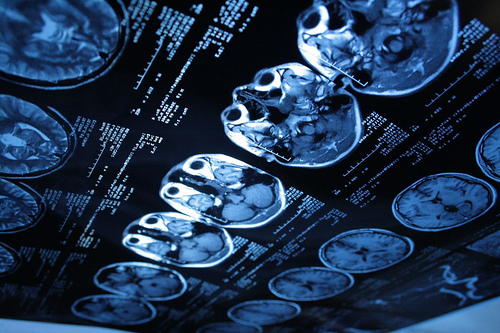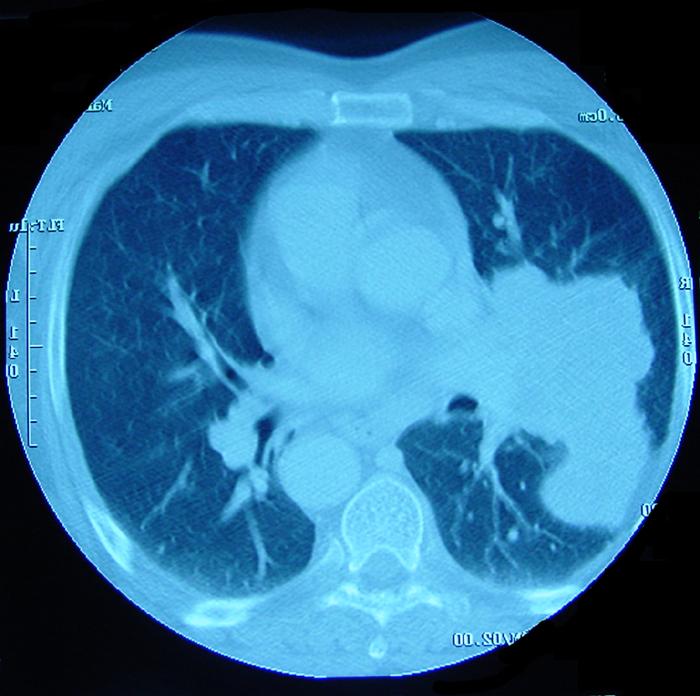What is CT Angiography?
CT (computed tomography) angiography (CTA)
is an examination that uses x-rays to visualize blood flow in arterial and
venous vessels throughout the body, from arteries serving the brain to those
bringing blood to the lungs, kidneys, and arms and legs. CT combines the
use of x-rays with computerized analysis of the images. Beams of x-rays
are passed from a rotating device through the area of interest in the patient's
body from several different angles to create cross-sectional images, which
then are assembled by computer into a three-dimensional picture of the area
being studied. Compared to catheter angiography, which involves placing
a sizable catheter and injecting contrast material into a large artery or
vein, CTA is a much less invasive and more patient-friendly procedure—contrast
material is injected into a small peripheral vein by using a small needle
or catheter. This type of exam has been used to screen large numbers of
individuals for arterial disease. Most patients undergo CT angiography without
being admitted to a hospital.
CT can also be used to Detect:
CTA is also used to detect narrowing or obstruction of arteries in the
pelvis and in the carotid arteries,which bring blood from the heart to the
brain. When a stent has been placed to restore blood flow in a diseased
artery, CTA will show whether it is serving its purpose. Examining arteries
in the brain may help reach a correct diagnosis in patients who complain
of headaches, dizziness, ringing in the ears or fainting. Injured patients
may benefit from CTA if there is a possibility that one or more arteries
have been damaged. In patients with a tumor, it may be helpful for the surgeon
to know the details of arteries feeding the growth.
What are some common uses of a CT procedure?
CT angiography is used to examine blood vessels
in key areas of the body, including the:
- Brain
- Kidneys
- Pelvis
- Legs
- Lungs
- Heart
- Neck
- Abdomen
CTA is commonly used
to:
- Identify disease and aneurysms in the aorta,
both in the chest and abdomen, or in other major blood vessels.
- Detect atherosclerosis disease in the
carotid artery of the neck, which may limit blood flow to the brain and
cause a stroke.
- Identify a small aneurysm or arteriovenous
malformation inside the brain.
- Detect atherosclerotic disease that has
narrowed the arteries to the legs and help prepare for endovascular intervention
or surgery.
- Detect disease in the arteries to the kidneys
or visualize blood flow to help prepare for a kidney transplant.
- Guide interventional radiologists and surgeons
making repairs to diseased blood vessels, such as implanting stents or
evaluating a stent after implantation.
- Detect injury to one of more arteries in
the neck, chest, abdomen, pelvis or extremities in trauma patients.
- Evaluate arteries feeding a tumor prior
to surgery or other procedures such as chemoembolization or selective
internal radiation therapy.
- Identify dissection or splitting in the
aorta in the chest or abdomen or its major branches.
- Show the extent and severity of atherosclerosis
in the coronary arteries and plan for a surgical operation, such as a
coronary bypass and stenting.
- Sample blood from specific veins in the
body to detect any endocrine disease.
- Examine pulmonary arteries in the lungs
to detect pulmonary embolism (blood clots from leg veins).
